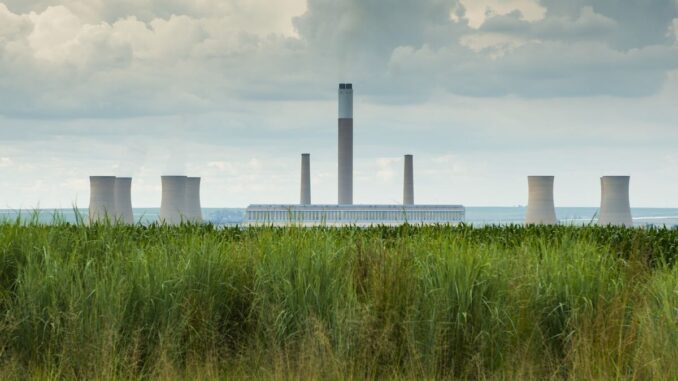
- Plans for new jobs around Komati came too late; study shows
- Ministers misled communities over plant viability: commission
South Africa’s transition away from the dirtiest fossil fuel has been marred by the botched approach to the closure of a coal-fired power plant, the first under a key climate policy initiative.
When the last unit at Komati, one of the state-owned power utility’s oldest plants, was shut last October, little attempt had been made to consult with workers or create new jobs, the Presidential Climate Commission said in a new study. Ministers from the ruling African National Congress also made misleading claims about the potential for the facility to have remained open, aggravating tensions among the country’s coal-dependent communities.
Some of the world’s richest nations are helping fund the transition away from coal in South Africa, Indonesia and Vietnam. But key ministers in President Cyril Ramaphosa’s government have attacked the switch to renewable energy, even as breakdowns at South Africa’s aging coal-fired plants trigger the nation’s worst-ever power cuts.
Eskom Holdings SOC Ltd. only began a study on the social impact of Komati’s closure in 2020, as it opened consultations with the government. It only started discussions with workers at Komati, east of Johannesburg, in May last year, as construction began on the first project to provide alternative jobs, a micro-grid container assembly plant. Five months later the power plant was shut.
“The process at Komati started too late,” the commission said. “Communities and workers should be informed of the closure years ahead of time.”
Eskom first began planning to close Komati — commissioned in 1961 with a capacity of 1,000 megawatts — in 2017. At that time about 1,600 people worked at the plant, but five years later just one of Komati’s nine units was still operating, generating 121 megawatts.
One month before its final closure, an agreement was reached to construct a renewable energy training facility at the site. That was the same month the first public meeting was held to inform the community of the plans. Last November, $497 million was secured from the World Bank to build renewable energy and battery plants.
The commission said subsequent comments by the energy and electricity ministers that the plant shouldn’t have been closed given South Africa’s power shortage have caused confusion and were inaccurate, fanning community hopes that the facility would reopen. Eskom would always have had to close the plant as it was reaching the end of its operational life, it said.
“Workers and community members considered the engagement process around the decommissioning, repurposing, and repowering of Komati to be highly inadequate,” the commission said. “They felt that they were being consulted after the fact and that the decommissioning of Komati was a fait accompli.”
Eskom conceded this, the commission said, adding that national, provincial and local government officials were considered by the community to have been unresponsive.
Future plant closures should be communicated earlier, more attention should be paid to the wider impact on the community and local businesses and projects to create replacement jobs should begin before facilities shut, the commission said.



